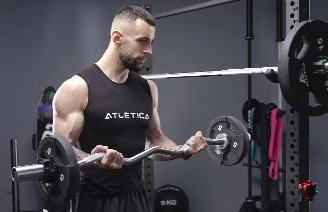Setting up a gym: The best tips for professional training | ATLETICA
Setting up a gym requires more than just choosing a few pieces of fitness equipment - it's the key to a successful and professional training room. Whether you're planning a commercial studio or want to build your own home gym, the right equipment is crucial to your users' training success. From strength and cardio equipment to functional training and stretching areas - find out how to set up your gym optimally and what you should definitely pay attention to.

Setting up gyms – why the right equipment is so important
When setting up a gym, choosing the right equipment is crucial to the success and satisfaction of users. A gym must not only meet the different fitness goals of its members, but also offer safety, comfort and durability. The right equipment ensures that athletes can effectively achieve their training goals - whether it is strength training, endurance training or functional workouts.
A key aspect when selecting equipment is adapting it to different fitness levels. From beginners to advanced athletes, the gym must be suitable for all users. High-quality equipment that is flexibly adjustable and ergonomically designed allows for individual adjustment so that everyone can train safely and comfortably.
The quality of the equipment also plays a major role, especially when used intensively. High-quality equipment is durable and can be used for years without losing performance or incurring high maintenance costs. This not only saves money in the long term, but also ensures that the studio remains ready for use at all times.
Safety is another important factor. Improper or poorly chosen equipment can increase the risk of injury, so it is essential to invest in equipment that is safe and stable to ensure safe training for all users.
Ultimately, the right equipment contributes to the atmosphere and professionalism of the gym. It motivates the trainees to come back regularly and promotes a positive training experience. In short: the right equipment is the basis of a successful gym.

Setting up a gym – what sports equipment do you need?
A well-equipped gym must offer a wide range of sports equipment to meet the different needs of the exercisers. The right selection of equipment enables a balanced workout that promotes strength, endurance, mobility and functional fitness. Here are the most important sports equipment that no gym should be without:
1. Strength training equipment
Strength training is an essential part of every gym. In order to specifically train all muscle groups, a studio needs a selection of machines and free weights:
- Multipresses : Ideal for bench presses, squats and other strength exercises with guided movements.
- Free weights : Dumbbells , barbells and barbells are essential for functional strength training.
- Weight machines : Equipment such as leg press, chest press, lat pulldown and rowing machine offer safe and effective muscle building training.
2. Cardio equipment
Cardio equipment is essential to improve endurance and cardiovascular health. The most popular and versatile cardio equipment is:
- Treadmills : For walking, jogging or sprinting – a must for every gym.
- Ergometers : Bicycles that are gentle on the joints and offer intensive endurance training.
- Cross trainers : These machines offer a joint-friendly whole-body workout and promote endurance.
- Rowing machines : An effective workout for the whole body that promotes endurance, strength and coordination.
3. Free weight area
A well-equipped free weight area is indispensable in every gym:
- Dumbbells and barbells : For upper body and core training. Dumbbells are available in a range of weights to suit exercisers of all fitness levels.
- Weight benches : Adjustable benches used for exercises such as bench presses, flat bench presses or dumbbell exercises.
- Kettlebells : Versatile for functional training that promotes strength, endurance and mobility.
4. Functional training equipment
Functional training is becoming increasingly popular because it aims to improve everyday movement patterns. These include:
- Cable pull stations : These devices allow for a versatile workout for the entire body, where the resistance can be individually adjusted.
- TRX bands : For training with your own body weight, ideal for improving stability and coordination.
- Plyoboxes : For jumping exercises and plyometric training that increases strength and explosiveness.
- Medicine balls : Versatile for exercises that improve core stability and explosive power.

5. Stretching and stretching area
An area where exercisers can stretch and warm up is important to prevent injuries and improve mobility. Suitable for this are:
- Gymnastics mats : For floor exercises, stretching or functional training.
- Balance and stability balls : Ideal for improving coordination, stability and core strength.
- Stretch bands and resistance bands : These simple tools are perfect for stretching exercises and targeted resistance training.
6. Boxing and martial arts equipment
Many gyms also include boxing and martial arts areas in their offerings. The most important equipment for this is:
- Punching bags : For training punching power and techniques, ideal for fitness boxing and kickboxing.
- Boxing gloves and pads : For partner exercises and targeted training of punch combinations and reflexes.
- Speedballs : To improve hand-eye coordination and punching speed.
7. Power racks and squat racks
For strength training, especially squats and barbell exercises, power racks and squat racks are indispensable. These devices offer the possibility to train safely with heavy weights as they have adjustable safety bars and dumbbell guides.
8. Pull-up bars and dip stations
These machines are perfect for training with your own body weight and offer a variety of exercises for the upper body, torso and core stability.
9. Stretching and cooldown equipment
Stretching is an important part of any workout to prevent injuries and improve mobility. A dedicated area for stretching and cooldown should include:
- stretching machines
- floor mats
- be equipped with fascia rolls .
10. Mirror and storage space
In addition to the equipment, mirrored walls are also important so that trainees can check their form and technique. In addition, storage systems for dumbbells, bands and smaller equipment should be in place to keep the training area tidy and safe.

To successfully set up a professional gym, you need a diverse selection of equipment that covers strength training, endurance, functional fitness and stretching exercises. With a well-thought-out selection of sports equipment that meets the needs of different fitness levels, you can create an attractive training environment that inspires your customers and helps them achieve their fitness goals.
Buying the right fitness equipment – what should you pay attention to?
When purchasing fitness equipment, there are some important criteria that you should consider in order to make the right choice in the long term. Whether for a commercial gym, a home gym or specialized training rooms - the quality, functionality and user-friendliness of the equipment play a crucial role. Here are the most important factors to consider when choosing fitness equipment:
1. Quality and workmanship
The quality of fitness equipment is crucial for its durability and safety. Robust materials such as steel frames, durable cables and hard-wearing padding ensure that the equipment lasts a long time, even with intensive use. Make sure that the workmanship is of high quality, especially at the joints and welds, to ensure stability.
2. Security
Safety aspects should always come first. Fitness equipment must be stable and well-made to minimize the risk of injury. Look for safety features such as adjustable guards, non-slip handles and emergency stops on cardio equipment. Equipment with guided movements or easily adjustable resistance offers a safe workout for beginners and advanced users alike.
3. Ergonomics and user-friendliness
Fitness equipment should be adjustable to suit different body sizes and training levels. Ergonomic handles, adjustable seats and padding are particularly important to support correct posture and reduce the risk of injury. The equipment should also be intuitive and easy to use, especially in public gyms where a trainer is not always available.
4. Functionality and versatility
Multifunctional equipment is a good choice because it offers multiple training options and saves space. For example, cable machines or adjustable weight benches are ideal because they allow for many different exercises. Think about which muscle groups or training goals you want to cover and choose equipment that combines several functions.
5. Space requirements
Before you buy fitness equipment, it is important to plan the available space carefully. Equipment such as treadmills, rowing machines or weight machines can take up a lot of space, so you should make sure that there is enough room for the equipment and freedom of movement for the exercisers. Areas for free weights and functional training should also be generously sized.
6. Maintenance effort
Fitness equipment should be as low-maintenance as possible. Look for equipment with durable and easy-to-maintain parts, such as low-wear cables or well-protected joints. Also consider whether the manufacturer offers a maintenance or repair service so that the equipment can be serviced quickly and easily if necessary.
7. Costs and budget
Price is obviously a factor, but make sure you invest in quality. Cheap devices are often less stable and durable, which can lead to higher costs in the long run. It's worth comparing different options and looking out for deals on used or refurbished devices from well-known brands that offer good value for money.
8. Maximum load capacity
Depending on who will be using the equipment, the maximum load capacity is crucial. Equipment with a higher load limit is especially important in commercial studios, as it is regularly used by different people. It should be able to safely support both lighter and heavier training loads.
9. Warranty and Service
The manufacturer's warranty terms are an important consideration when purchasing fitness equipment. A longer warranty period often shows that the manufacturer has confidence in the quality of its equipment. Make sure you understand the exact warranty terms and that the dealer or manufacturer offers good service for repairs or maintenance.
10. Design and Aesthetics
The design of the fitness equipment also plays a role. Modern and attractive equipment helps users feel comfortable in a gym and stay motivated. Equipment that is visually appealing and functional at the same time leaves a professional impression.
When buying fitness equipment, it is important to pay attention to quality, safety and user-friendliness. Multifunctional and ergonomic equipment that requires little maintenance and is robustly manufactured offers the best value for money in the long term. With the right equipment, you lay the foundation for safe and successful training, whether in a professional gym or a home gym.

Setting up a gym – get free advice
You can find all of these high-quality fitness equipment and much more in the Atletica online shop . Whether you want to equip a gym or perfect your home gym, at Atletica we offer you a wide selection of functional, durable and ergonomic equipment. The best thing: you can get a free initial consultation now!
Our experts are on hand to help you find the ideal equipment for your individual needs. Start your fitness project with Atletica and get the best support right from the start!

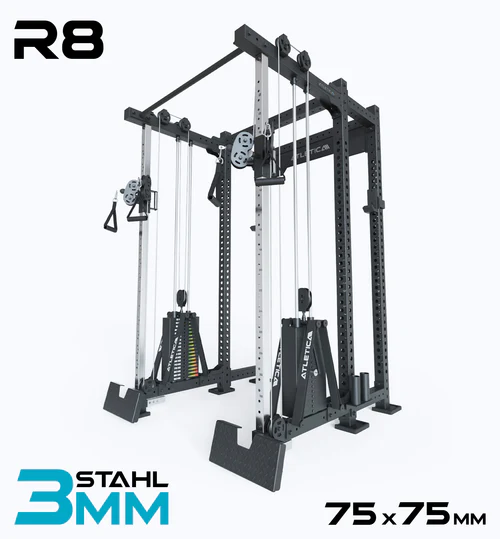



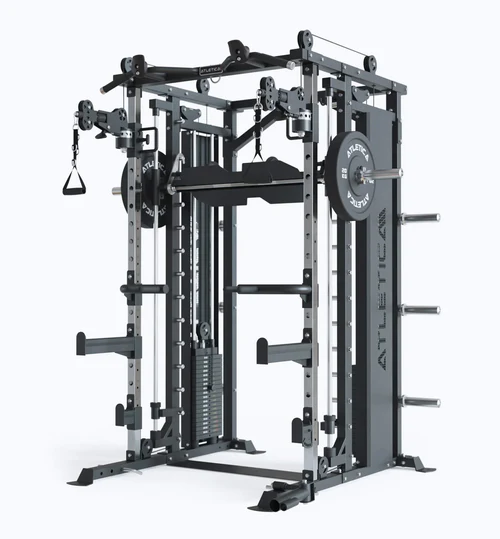



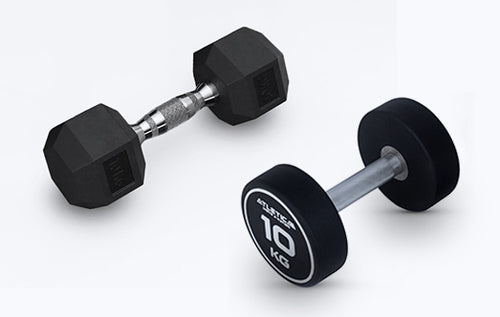






























 Chat
Chat Gorresstrasse 5
Gorresstrasse 5 Mon-Fri : 8am - 7pm
Mon-Fri : 8am - 7pm Netherlands
Netherlands

 Sweden
Sweden
 France
France
 Belgium
Belgium
 Denmark
Denmark
 Rest of Europe
Rest of Europe


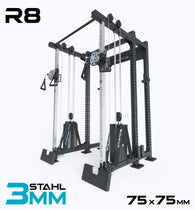






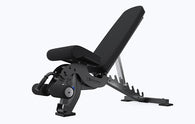





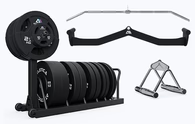
















 Gorresstrasse 5
Gorresstrasse 5